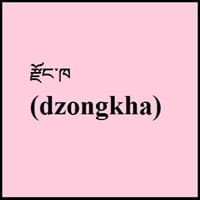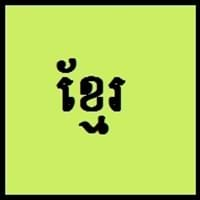Dzongkha and Khmer
Countries
Bhutan
Cambodia
National Language
Bhutan
Cambodia, Thailand, Vietnam
Second Language
India
Not spoken in any of the countries
Speaking Continents
Asia
Asia
Minority Language
India
Australia, France, United States of America
Regulated By
Dzongkha Development Commission
Not Available
Interesting Facts
- Standard romanization of the Dzongkha language is Roman Dzongkha.
- Khmer is not the tonal language.
- Khmer language has borrowed philisophical, administrative and technical vocabulary from Sanskrit and Pali.
Similar To
Sikkimese Language
Lao Language
Derived From
Tibetan Language
Pali and Sanskrit Languages
Alphabets in
Dzongkha-Alphabets.jpg#200
Khmer-Alphabets.jpg#200
Scripts
Dzongkha Braille, Tibetan Braille
Khmer
Writing Direction
Not Available
Left-To-Right, Horizontal
Language Levels
Not Available
Time Taken to Learn
Not Available
Thank You
Kaadinchhey La
សូមអរគុណអ្នក (saum arkoun anak)
How Are You?
Ga Day Bay Zhu Yoe Ga ?
អ្នកសុខសប្បាយទេ
Good Night
lek shom ay zim
ND
Good Evening
Not Available
ND
Good Afternoon
Not Available
ND
Good Morning
Not Available
ND
I Love You
Nga cheu lu ga
ND
Dialect 1
Laya
Northern Khmer
Where They Speak
Bhutan
Australia, Cambodia, France, Thailand, United States of America
Dialect 2
Lunana
Khmer Krom
Where They Speak
Bhutan
Vietnam
Dialect 3
Adap
Western Khmer
Where They Speak
Bhutan
Cambodia, Thailand
Total No. Of Dialects
Not Available
Speaking Population
Not Available
Second Language Speakers
Not Available
Native Name
རྫོང་ཁ (dzongkha)
ភាសាខ្មែរ (bhāsā khmɛ̄r)
Alternative Names
Bhotia of Bhutan, Bhotia of Dukpa, Bhutanese, Drukha, Drukke, Dukpa, Jonkha, Rdzongkha, Zongkhar
Cambodian, Khmer
French Name
dzongkha
khmer central
German Name
Dzongkha
Kambodschanisch
Pronunciation
Not available
[pʰiːəsaː kʰmaːe]
Ethnicity
Ngalop people
Khmer, Northern Khmer
Language Family
Sino-Tibetan Family
Austroasiatic Family
Subgroup
Not Available
Not Available
Branch
Tibeto-Burman
Not Available
Early Forms
No early forms
Proto-Khmer
Standard Forms
Dzongkha
Modern Khmer
Signed Forms
Not Available
Not Available
Scope
Individual
Individual
ISO 639 6
Not Available
Not Available
Glottocode
nucl1307
khme1253
Linguasphere
No data Available
Not Available
Language Type
Living
Living
Language Linguistic Typology
Not Available
Subject-Verb-Object
Language Morphological Typology
Not Available
Analytic, Isolating
All Dzongkha and Khmer Dialects
Most languages have dialects where each dialect differ from other dialect with respect to grammar and vocabulary. Here you will get to know all Dzongkha and Khmer dialects. Various dialects of Dzongkha and Khmer language differ in their pronunciations and words. Dialects of Dzongkha are spoken in different Dzongkha Speaking Countries whereas Khmer Dialects are spoken in different Khmer speaking countries. Also the number of people speaking Dzongkha vs Khmer Dialects varies from few thousands to many millions. Some of the Dzongkha dialects include: Laya, Lunana. Khmer dialects include: Northern Khmer , Khmer Krom. Also learn about dialects in South American Languages and North American Languages.
Dzongkha and Khmer Speaking population
Dzongkha and Khmer speaking population is one of the factors based on which Dzongkha and Khmer languages can be compared. The total count of Dzongkha and Khmer Speaking population in percentage is also given. The percentage of people speaking Dzongkha language is Not Available whereas the percentage of people speaking Khmer language is 0.24 %. When we compare the speaking population of any two languages we get to know which of two languages is more popular. Find more details about how many people speak Dzongkha and Khmer on Dzongkha vs Khmer where you will get native speakers, speaking population in percentage and native names.
Dzongkha and Khmer Language Codes
Dzongkha and Khmer language codes are used in those applications where using language names are tedious. Dzongkha and Khmer Language Codes include all the international language codes, glottocodes and linguasphere.





